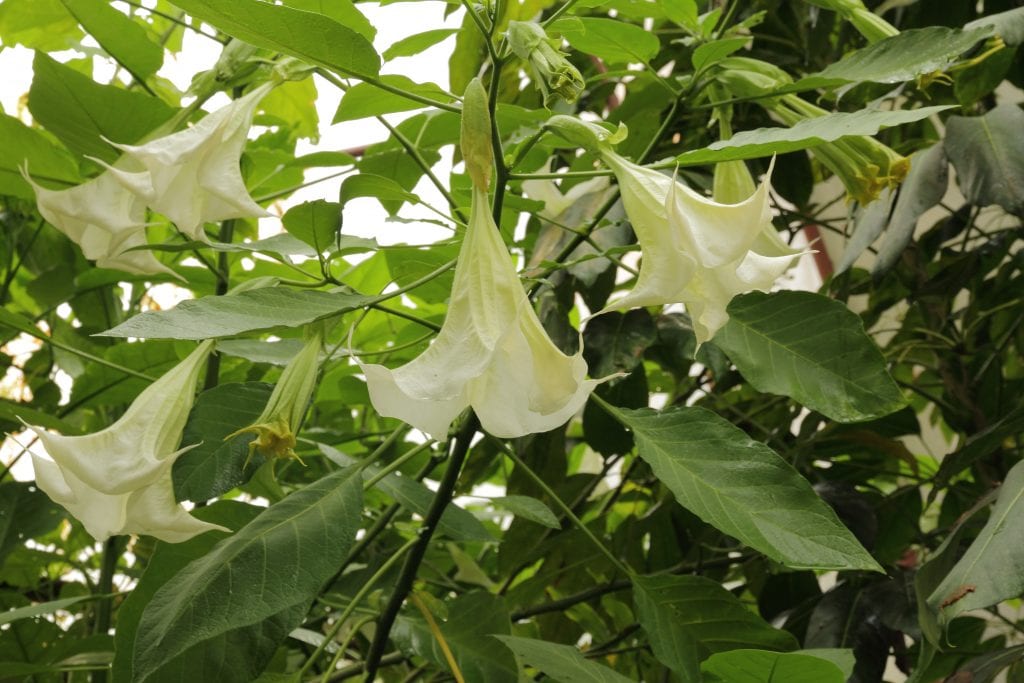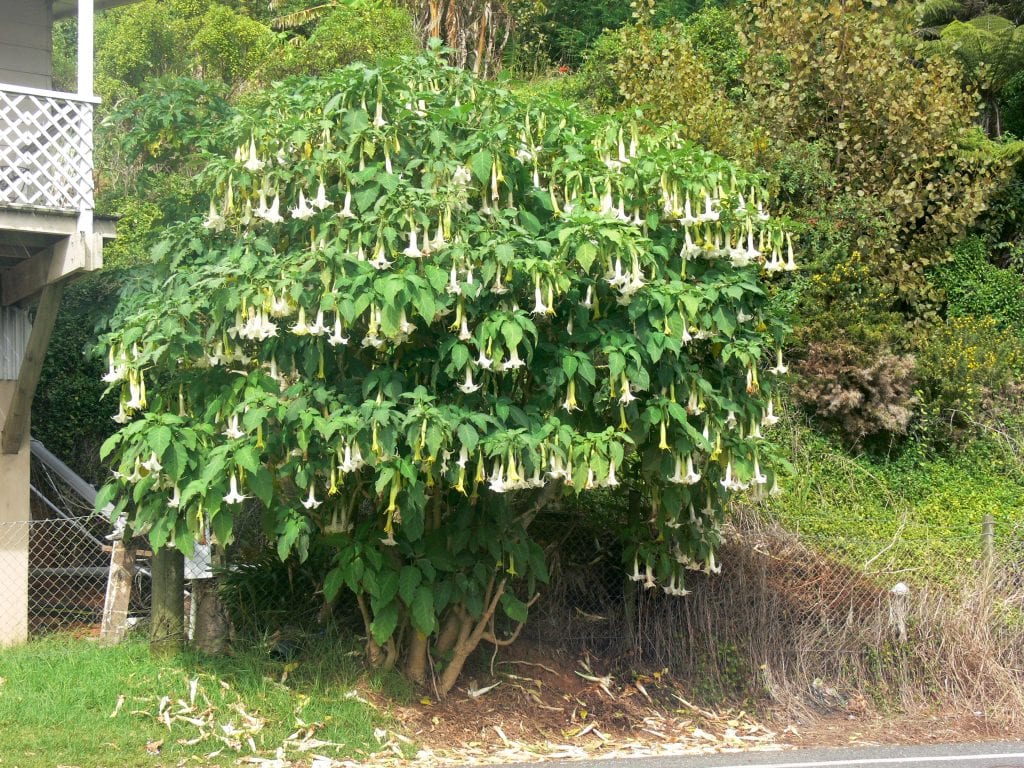
Originally from Peru and Chile, the Trumpet tree It is a plant that, despite its toxicity, has earned its place in warm and temperate gardens around the world. Its characteristic trumpet-shaped flowers, its dense crown that sprouts from straight trunks, make it a highly recommended option for planting in homes.
It is very easy to care for, so whether you do not have much experience taking care of green or if you have been in this world for a long time, this species will give you great satisfaction.
Characteristics of the Tree of Trumpets

Our protagonist, known as Trumpeter, Trumpet of Judgment or White Floripondio, it is a shrub that behaves like an evergreen -that is, it remains evergreen- in warm regions, or as deciduous -Runs out of foliage in autumn-winter- in cool regions. Its scientific name is Brugmansia arborea, and belongs to the botanical family Solanaceae.
It reaches a height of 7 meters. Its leaves are alternate, oval, with a hairy underside, matte green in color, and about 7-10cm long by 3-4cm wide. The lovely white flowers, which sprout from summer to autumn, are large, up to 30cm, aromatic, and trumpet-shaped, which is what gives one of its common names (Tree of Trumpets).
All parts of the plant are toxic. The simple rubbing with the eyes can cause irritation.
How do you take care of yourself?

If you want to have a specimen in your garden, follow our advice:
- Location: outside, in semi-shade.
- Soil or substrate: it is not demanding, but it grows better in those that have good drainage.
- Irrigation: frequent in summer, somewhat scarcer the rest of the year. You have to try to prevent the soil from drying out during the hottest days, being able to water daily if necessary. Of course, it is not necessary to flood the earth, since the roots would not support it. It is best to check the humidity of the soil by inserting a thin wooden stick all the way to the bottom and see how much has stuck to it. In the event that it comes out practically clean, then we can water.
- Subscriber: if it is in a pot, it is highly recommended to fertilize with liquid organic fertilizers, such as guano, following the instructions specified on the container. If it is in the garden the compost is not necessary.
- Planting / Transplant time: in spring.
- Multiplication: by seeds and by semi-woody cuttings in spring.
- Rusticity: supports up to -2ºC.
What did you think of this plant?